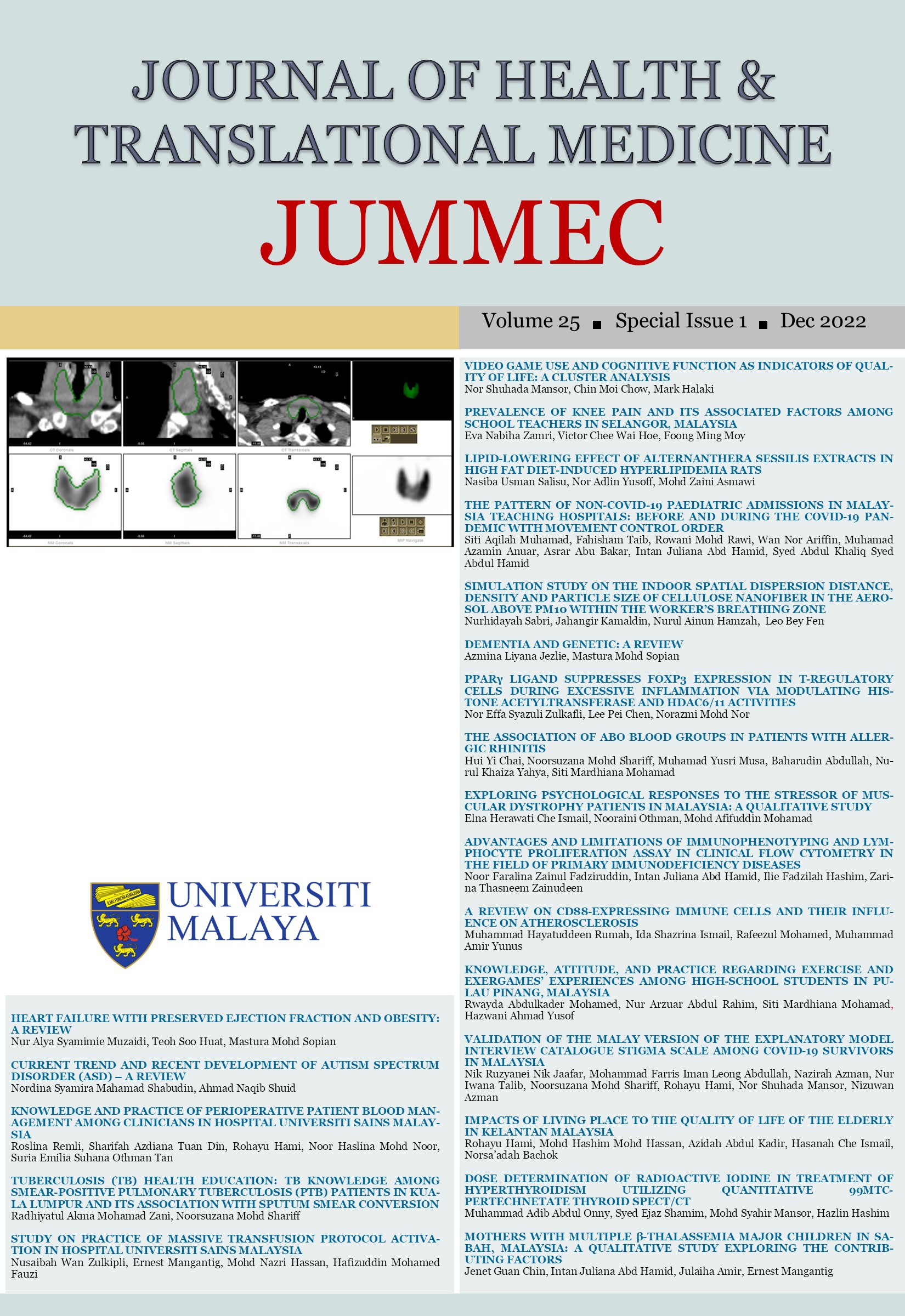PREVALENCE OF KNEE PAIN AND ITS ASSOCIATED FACTORS AMONG SCHOOL TEACHERS IN SELANGOR, MALAYSIA
Received 2022-07-15; Accepted 2022-10-09; Published 2022-12-31
DOI:
https://doi.org/10.22452/jummec.sp2022no1.2Abstract
Knee pain (KP) is commonly reported among workers, especially those in non-managerial occupations such as carpenters, miners and construction workers. However, few studies have been conducted on KP among the teacher population. Therefore, this study aimed to determine the prevalence of KP among school teachers and to explore its association with individual characteristics, lifestyle, work factors, and presence of health conditions. A cross-sectional survey was conducted among teachers at public secondary schools in Selangor, Malaysia. A self-reported questionnaire was utilised to elicit information on socio-demographic characteristics, lifestyle, body mass index, work-related factors, and health-related quality of life (HRQoL). Associations with KP were analysed by logistic regression and reported as odds ratios (ORs) at a 95% confidence interval (CI). The results revealed that the 12-month prevalence of KP was 54.4%. The multivariate analysis showed that age (OR 3.55, 95% CI: 1.92–6.54), kneeling or squatting >1 hour in total (OR 1.48, 95% CI: 1.06–2.08), and physical HRQoL (OR 0.94, 95% CI: 0.92–0.96) were significantly associated with the occurrence of KP. In conclusion, the prevalence of KP among secondary school teachers is high. Age, work-related physical practises, and physical health were found to be significantly associated with KP. Therefore, appropriate strategies should be implemented to address these factors in order to reduce the occurrence of KP, especially among the older teacher population.
Downloads
Downloads
Published
Issue
Section
License
All authors agree that the article, if editorially accepted for publication, shall be licensed under the Creative Commons Attribution License 4.0 to allow others to freely access, copy and use research provided the author is correctly attributed, unless otherwise stated. All articles are available online without charge or other barriers to access. However, anyone wishing to reproduce large quantities of an article (250+) should inform the publisher. Any opinion expressed in the articles are those of the authors and do not reflect that of the University of Malaya, 50603 Kuala Lumpur, Malaysia.


